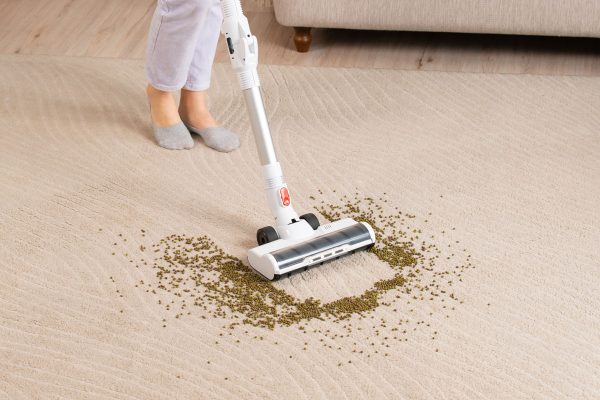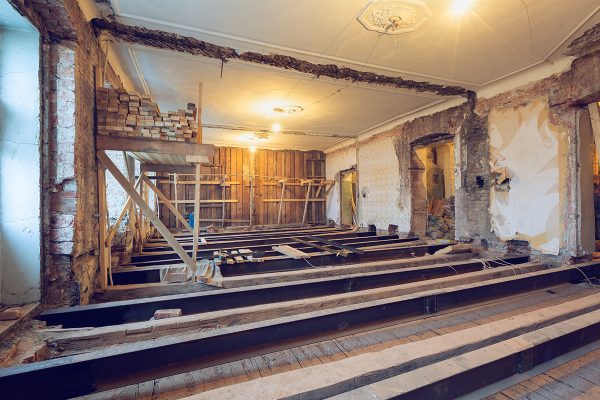Uneven laminate flooring joints aren't only unappealing, but they're also safety hazards. So what can you do to fix the irregularities? We researched this concern for you and here's the information we found.
Make sure to have the necessary materials and tools to avoid making extra return trips to your local hardware and/or flooring store. Also, follow preventive measures to avoid making mistakes during the process. Once you’re confident with the preparations, the steps to fix laminate flooring joints that aren’t flush are:
- Shift the entire row
- Apply sealant
- Use super glue
- Return the laminate boards
At first, it might look like a reasonably straightforward job. But disregarding some details may result in costly mishaps. So continue reading as we talk about these steps in greater detail.
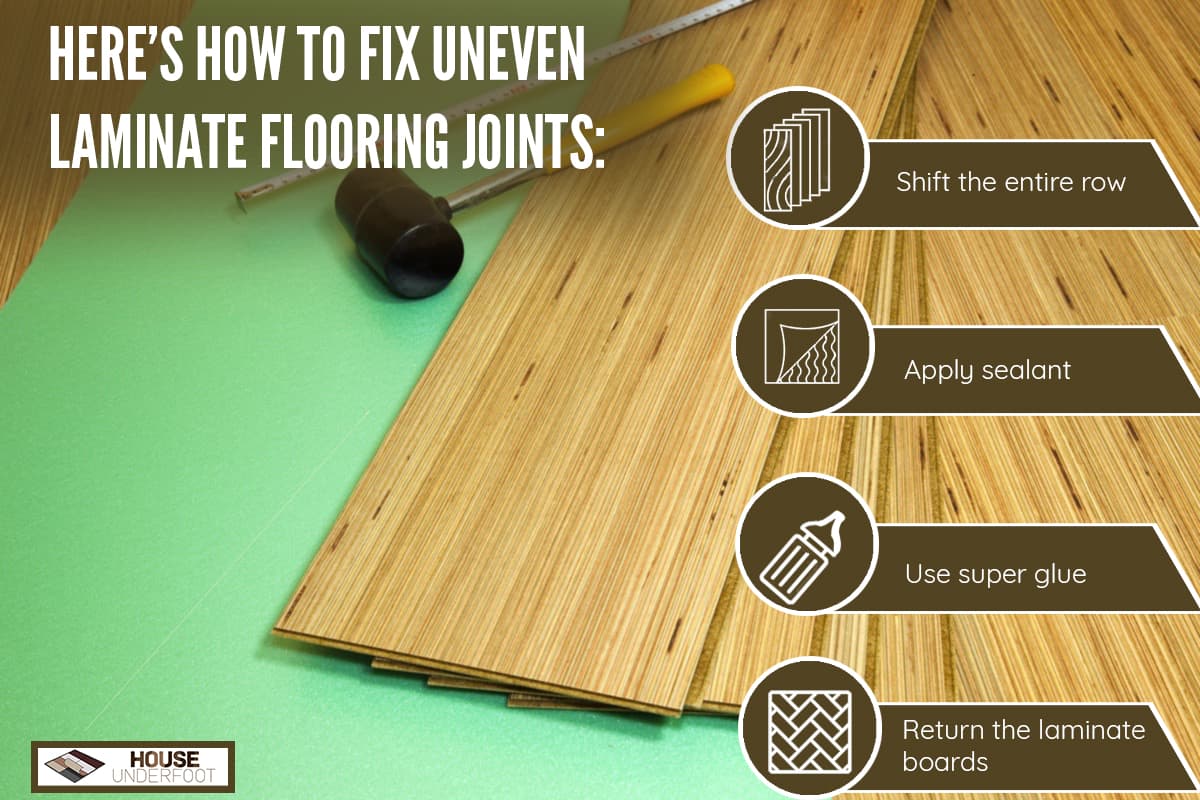
How Do You Fix An Uneven Laminate Joint?
First, consult with your laminate flooring manufacturer or retailer before you proceed with the repair procedure. That way, you can verify if making any modifications to your laminate floor may void its warranty.
Also, follow these safety guidelines before, during, and after this job:
- Don’t start the procedure if you’re still under the influence of alcohol or medication.
- Request assistance from another individual to make the process easier and safer.
- Ensure that the work area is clean to prevent accidents and injuries.
- Wear safety equipment, such as sturdy shoes and long-sleeved clothing.
- Only use tools that are still in good working condition.
After taking note of those precautions, follow these general steps to even out your laminate flooring joints:
What You’ll Need
- Floor suction cup
- Masking or painter’s tape
- Hose and syringe kit
- Laminate flooring installation kit
- Sealant
- Super glue and activator
- Cotton buds
- 10-in-1 Multitool
- Utility knife
- Impact drill and drill bits
Step-by-Step Guide
Step #1: Shift The Entire Row
It’s often best to work with the entire row where you can find the unevenness. Otherwise, dealing with only one board from the series may break the click-and-lock system of your laminate floor.
So use the floor suction cup on each laminate board. Then, tap that tool with a rubber hammer until each panel becomes shifts in the desired direction.
If you’re having trouble moving a board, pry it out with either the 10-in-1 multitool or a utility knife. But be careful in using these tools as applying significant force may harm the subfloor.
Step #2: Apply Sealant

Place masking or painter’s tape on the edges of the laminate boards. That way, you won’t put significant harm to these materials with the products that you’re about to use.
Place a reasonable amount of caulking in the hose and syringe kit. Next, drill a small hole into the offending laminate board. Ensure that you create the hole in the taped area. Inject the caulking through the newly created hole afterward.
Step #3: Use The Superglue
Apply a small amount of superglue to one end of a cotton bud. Then, apply that tip to the gap between the laminate flooring boards. But be careful not to overdo it as you might wind up with large superglue chunks.
Next, spray the activator on the applied super glue. Again, make sure not to overdo it to avoid damaging the laminate panel.
Step #4: Return The Laminate Boards
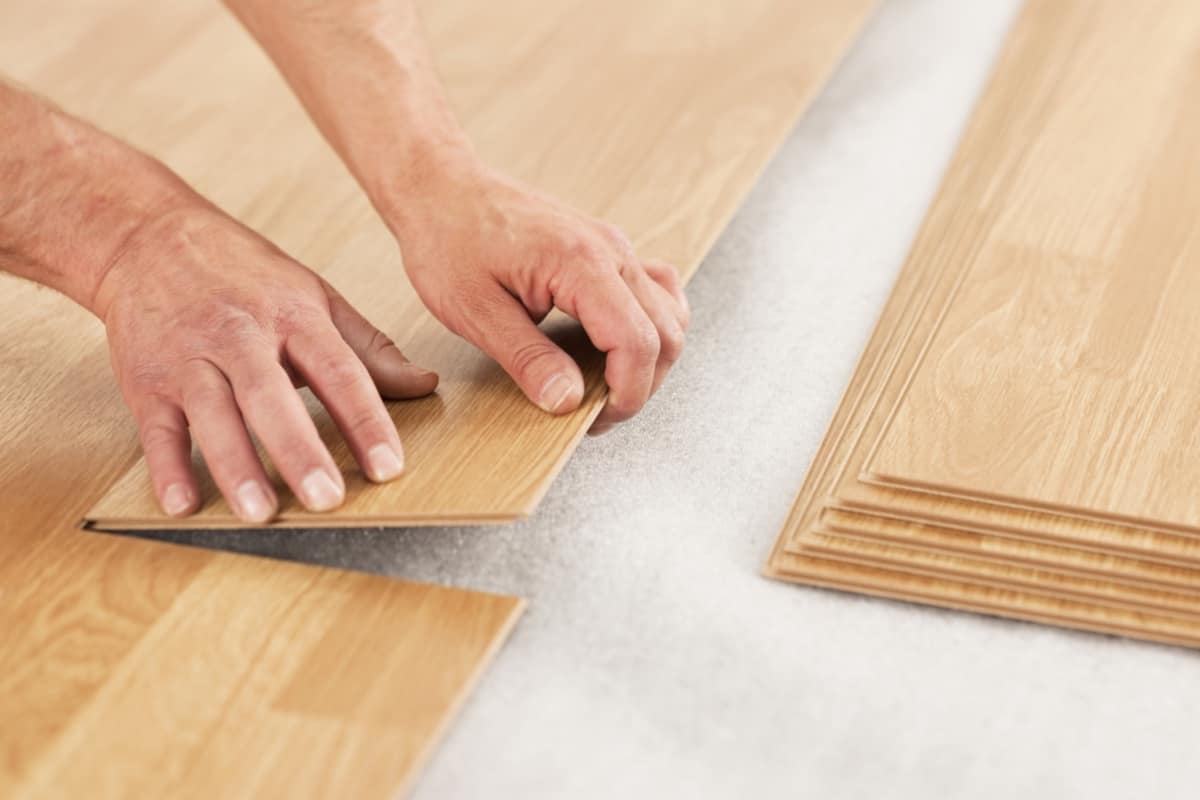
Use the floor suction cup again. But this time, tap the suction cup and the attached floorboard back into place. Also, lightly tap the laminate board until it becomes flush with the rest of the row.
Remove the masking tape afterward. If some masking tape remains because of the superglue, gently scrape it off with the utility knife.
Finally, don’t step on the repaired laminate floor panel and its joints for a few days. Allow the sealant and the glue to dry and cure before reintroducing traffic to that space.
Check out this laminate flooring installation kit on Amazon.
You can also watch the video below to gain additional insight into this procedure:
If you’re curious about the bounciness of a laminate floor, read our post on that matter to learn about it.
What Are The Causes Of Laminate Flooring Joints To Become Uneven?
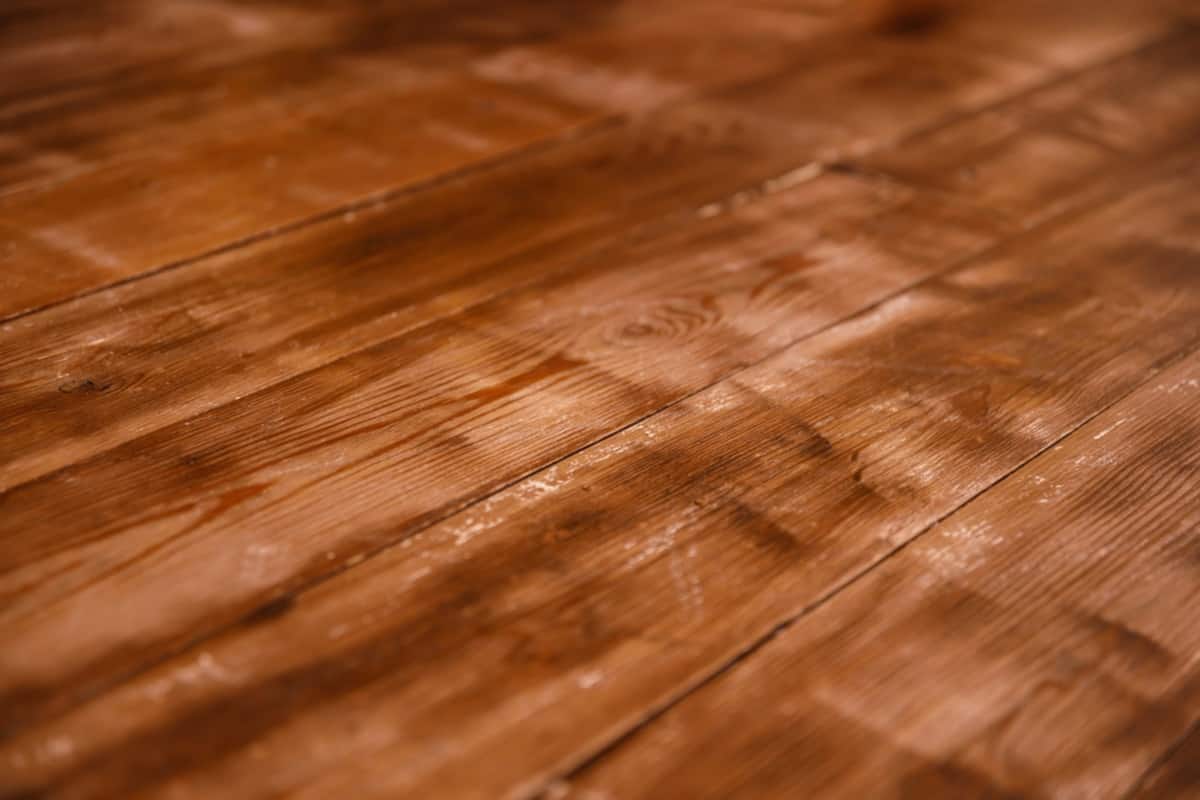
Laminate flooring can sometimes buckle, which happens when a force pushes against material and deforms it in the process. The result is an uneven floor, which can also lead to safety issues if left unchecked.
Some of the possible causes of laminate flooring joints buckling and becoming uneven are:
- Excessive moisture
- Little to no expansion gap
- High humidity
- Freezing temperature
- Inclement weather
- Uneven subfloor
- Floor didn’t acclimate before the installation
Aside from buckling, other things that can cause irregularities to laminate flooring are:
- Peaking: Generally happens when laminate boards push against each other because of the absence or lack of an expansion gap.
- Gapping: Occurs when laminate flooring panels pull away from their joints and the other boards.
- Chipping: Improper installation and use of laminate flooring may cause harm to the flooring’s edges.
Plus, using low-quality laminate flooring might also increase the risks of these issues appearing. Buying good- or high-quality laminate floorboards often provides better value than their low-quality counterparts.
Check out this laminate flooring on Amazon.
How Much Does It Cost To Install Laminate Floors?
It typically costs about $3 to $8 per square foot to install laminate wood flooring. That price range may already include labor and material expenses. So a homeowner of a 200-square foot single-floor house might expect to pay approximately $600 to $1,600.
Some factors that can affect the flooring installation’s overhead are its:
- Texture
- Finish
- Edging
- Underlayment
- Thickness
- Abrasion class (AC) rating
What Are The Advantages Of Laminate Flooring?

It might be a good idea to stick with your laminate flooring instead of replacing it with another material. Even though you might run into some issues with laminate, it may still be possible to fix it without replacing the entire floor.
Certain advantages of laminate flooring you should think about are:
Fairly High Durability
Good-quality laminate flooring generally has reasonably high impact and scratch resistance. If cared for properly, laminate wood panels may last longer than other flooring options like carpet and vinyl.
This durability may also allow guests and household members to keep wearing their footwear while they're on the floor and without the significant worry of damaging the material. Some trustworthy laminate flooring companies may also provide long-term warranties on their products to bring peace of mind to customers.
Straightforward Installation
Laminate floor joints typically have designs that interlock. That means that the boards are generally easy to install. This relative ease may provide some degree of relaxation for a beginner DIYer.
Overall Costs
As mentioned previously, purchasing and installing laminate flooring isn’t as expensive as other floor options. In comparison, hardwood floor installation fees are within the average range of $6 and $12 per square foot. So installing a laminate floor can be a good option for property owners following strict budgets.
At this point, you might also be looking for suitable flooring options with your butch block countertops. If so, check out our post on that topic to know about some excellent candidates.
Final Words
Your laminate flooring joints may buckle and become uneven because of different suspects, such as flooding and rapid temperature changes. But you might still be able to fix the unevenness by enhancing the seal between the joints and pounding the boards into place. If done correctly, the laminate floor panel should become level with the rest of the flooring.



